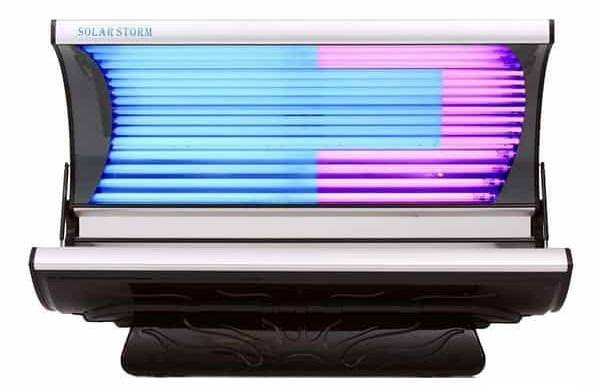
There’s nothing quite like a fresh tan to make you feel like you just got back from a sun-soaked beach vacation. But if you live in an area with limited sunshine or colder temperatures, this tan will fade quickly. Going to the tanning salon is a solution – but this can be a hassle, not to mention an added expense.
If you’re one of the near 8 million Americans who frequent tanning salons, you might want to consider buying a home tanning bed. There are lots of benefits to having home tanning beds as opposed to going to a salon.
First, it is far more sanitary and private. You and your family will be the only ones using the bed, so no need to worry about foreign germs! You can also go whenever you’d like, regardless of the time of day.
Now, if you are thinking of buying a home tanning bed, there may be a few questions you want to be answered first. Tanning beds are a big financial investment, so you want to make absolutely sure that you pick the right one for you.
That’s why we have created this comprehensive tanning bed buying guide that is designed to give you all the information you need before you make any purchases. Family Leisure offers both residential and commercial tanning beds, so we know a thing or two about these machines.
In this tanning bed buying guide, we will cover the important factors that will help you when buying a home tanning bed:
Let’s dive in!
The first tanning bed was actually built in the 1920s and the first tanning salon opened in Berlin, Germany in 1977. They gained popularity in the late 70s and early 80s and salons started popping up all over Europe and North America.
These days, there are two main categories of tanning beds you’ll see:
Commercial models are what you see at most tanning salons. They are large and are designed to accommodate people of all heights, shapes, and sizes. Some even offer advanced tech features! Commercial tanning beds are powerful and are a great way to get a glow in just a few minutes.
However, going to the salon frequently enough to keep the glow going isn’t a feasible option for everyone.
So, retailers started offering home tanning beds that could easily fit in the basement, garage, or even the backyard! Residential tanning beds are generally lighter than commercial beds and are designed for lower usage.
There are some key differences to note between the types of tanning beds at professional salons versus the ones designed for residential use. Here are some of the most notable ones:
One of the most notable differences between commercial and residential tanning beds is their purpose. Home tanning beds may only be used a couple of times a week. Commercial tanning beds, on the other hand, are designed to be used several times a day with varying wattages.
Commercial models tend to be a bit more heavy-duty and are made from thicker acrylic parts. This also means that they are larger – which isn’t ideal for homeowners. Residential tanning beds feature slimmer designs that take up less room. However, they may not be quite as durable and should be handled with care.
Commercial tanning beds are made to power up quickly, as they are turned on and off multiple times a day. They require higher voltages, which use quite a bit of electricity. Home models may take longer to power up, but they don’t use as much voltage. Using a commercial tanning bed at home could rack up your power bill quickly, so having a residential version is the better choice.
The number of lamps in a tanning bed determines how strong the UV rays will be. You don’t need to stay in tanning beds with a higher lamp count as long to get to your desired level of bronze. However, more lamps require more power.
Commercial tanning beds have between 24 to 48 lamps inside, whereas the most you’ll see in a residential model is 36. The majority of home tanning beds have 24 lamps, while some have as few as 16.
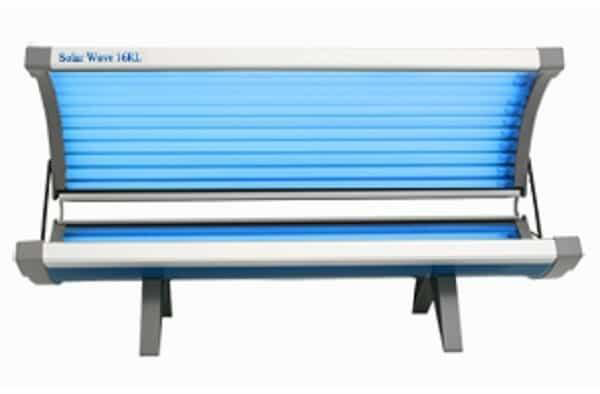
Commercial tanning beds come in many different sizes to accommodate tall, short, large, and small people. You can even find standup versions of commercial tanning beds in some salons!
Residential tanning models are typically designed to be smaller. You also have the benefit here of buying a model that fits your needs and doesn’t need to be a one-size-fits-all style.
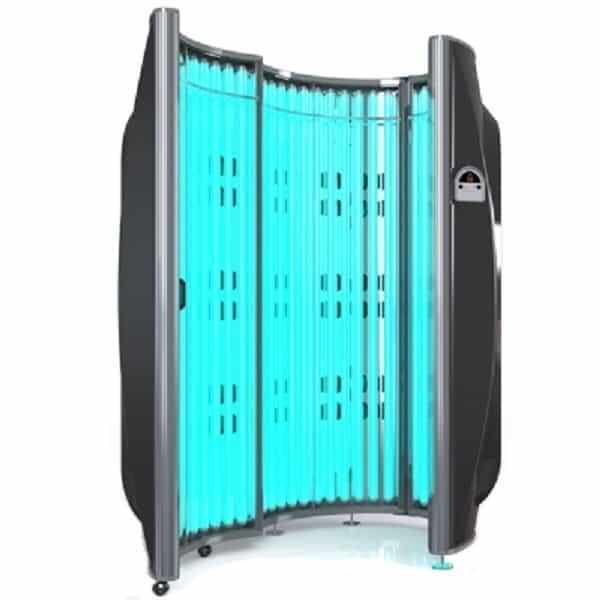
Arguably the most significant difference between commercial and residential tanning beds is the cost.
Commercial models are about twice as expensive as residential ones - since they are heavier, more powerful, and more durable. The pricing for home tanning beds starts at about $1,800, whereas a commercial tanning bed will cost you at least $2,600.
If you want to have a tanning bed at home, there are some factors you need to think through before buying a home tanning bed.
First, make sure you have enough room for the tanning bed. Tanning beds are usually pretty large, although you can find more compact versions. Make sure that you have enough room to fit the tanning bed, open and close it safely, and leave some space between the bed and walls for safety purposes.
You have the option to choose between a horizontal lie-down tanning bed or a vertical stand-up option. Vertical tanning beds take up less room, but they aren’t as comfortable if you intend to tan for long periods of time.
Everyone’s skin type is different, and some people respond better to tanning beds than others depending on the strength of the UV lamps. If you have more sensitive skin or burn easily, it is best to buy a home tanning bed with fewer lamps and lower UV lights.
Buying a home tanning bed is a big financial investment; you should consider how often you will be using it. If you are a frequent tanner, you should invest in a higher quality tanning bed that will last you a long time. It’s also important to get a model that can keep up with your demands, so a more powerful tanning bed might be best.
Is the tanning bed just for your personal use or will your friends and family use it, too? If so, you will want to get a model that can accommodate everyone’s sizes and tanning goals. Be sure to consider their height, size, and how often they will be using the tanning bed. You may want to buy a tanning bed with various features and settings so that everyone can get the tanning experience they want.
Most residential tanning beds require a 120 to 240 Volt power source. Make sure to check on the electrical outlet where you plan to plug in your tanning bed. You may need to contact an electrician to install a stronger voltage outlet to ensure that your tanning bed will work properly.
Some home tanning bed models come with additional features, such as automatic timers, body fans, or even Bluetooth systems so you can play music while you tan! This creates a far more luxurious experience and can help to keep you cool and comfortable while you tan.
You may not realize that tanning beds have varying levels of pressure. Levels 1 and 2 have low-pressure bulbs which emit higher levels of UVA rays. Levels 3 to 6 have high-pressure bulbs with lower UVA emissions. Low-pressure is best for infrequent tanners, while high-pressure can help to maintain tans over long periods of time.
Another major consideration is your personal budget. Buying a home tanning bed will cost thousands of dollars – but some retailers offer financing options. Be sure to ask the retailer about payment plans they offer to break down the cost into smaller monthly payments. This can make buying a home tanning bed far easier if your budget is tight!
When you buy a new tanning bed, it should come with a warranty from the manufacturer or retailer. This typically varies depending on the brand, as well as the part. For instance, lamps may only have a 30-day warranty whereas the inner workings may have a year-long warranty. Be sure to research and see how long each piece is covered.
Finally, you want to make sure you’re getting your residential tanning bed from a reliable and verified seller. While you can save a couple of bucks buying from private resellers or discount shops, this isn’t always the wisest decision. You are best to buy from a trusted dealer that knows a lot about tanning beds and offers a warranty or guarantee.
Here’s what to expect regarding the cost of tanning beds.
As mentioned before, commercial tanning beds are usually more expensive because they are heavier, larger, and designed for consistent use. Commercial units range in price from about $2,600 to $7,000. More advanced models with top-notch technology can cost far more – and you typically have to reach out to the supplier for a quote.
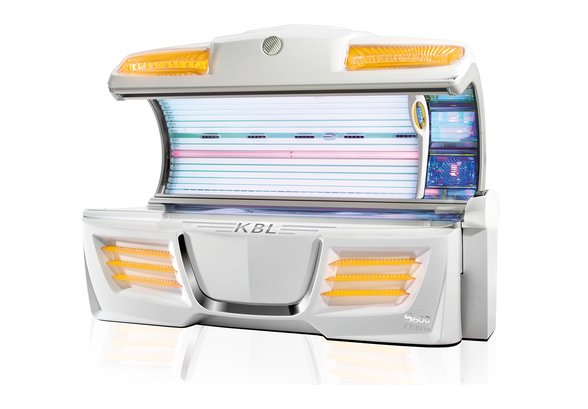
Since home tanning beds are smaller and lighter, they do not cost as much as commercial models. You can score a 16 lamp tanning bed for as little as $1,800 or go for a stand-up tanning booth for $4,000.
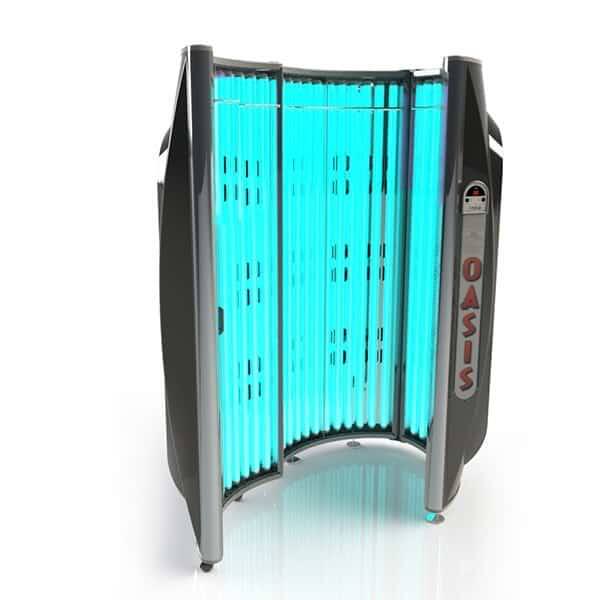
To make sure your home tanning bed lasts for years to come, you need to keep up on routine tanning bed maintenance. As with any machine, the more preventative care you take, the longer it will last. You can also save quite a bit of money by avoiding expensive repairs if you know how to care for the parts.
Before you use the tanning bed, you should first lightly dust off the fan, reflectors, and bulbs. This dust can diminish the amount of UV light coming from the bulbs, resulting in a weaker tan. It can also smell when the bulbs heat up or cause issues with the fan’s operation.
About once a week, do a more in-depth cleaning, especially if you use the tanning bed frequently. First, you will want to clean out the ballast tray, which holds the electrical equipment. Unplug the machine first and carefully remove dust around the area.
Every time you use your tanning bed, you should carefully wipe all the surfaces you have touched with a tanning bed cleaner. These can be purchased online or from a tanning bed supplier in a concentrated form. Avoid using regular household cleaners or rubbing alcohol to clean a tanning bed, as these chemicals can be too harsh.
It is wise to keep track of any maintenance you do for the tanning bed. Write down every time it is deep cleaned, serviced, or parts are replaced. This helps you keep track of when things are due for a tune-up so everything is serviced regularly. A maintenance log is also beneficial if you need to make a warranty claim or sell the tanning bed.
Some things to include in this log are:
You should always consult the manual that comes with your tanning bed before making any changes. This guidebook will tell you exactly how to clean each part, how often to replace pieces, and how to use your tanning bed correctly. If you depart from the manual, you could void your warranty should anything happen.
Lastly, you should schedule a professional service to handle routine and emergency maintenance. They will thoroughly inspect your tanning bed to make sure it is running smoothly, and may offer preventative services like bulb replacements and tune-ups to keep things going.
Investing the time and money into your tanning bed will help it last for far longer.
Going to the tanning salon multiple times a month – or week – isn’t ideal for people with a busy schedule. There are also times of the day or holidays when the salon is closed, meaning that you’re stuck without a tan. Having a home tanning bed solves this problem. You can tan in the middle of the night if you want!
Apart from convenience, one of the main reasons people often consider getting tanning beds for home use is to save money. If you are a regular tanner, it can cost you a pretty penny to visit a salon. Depending on the rates, a yearly membership at a salon can cost you upwards of $1,000!
In this case, the cost of a tanning bed could save you money in the long run. However, it can be a fairly major financial investment upfront.
Although many tanning salons claim to be sanitary and clean, you can’t always trust what they say. Germs can easily spread on shared tanning beds. In fact, scientific reportfound that many public tanning beds have high levels of bacteria and even STIs.
When you’ve got a tanning bed at home, you know exactly who is using it and you’re in charge of keeping it clean.
If you’ve got an upcoming event and need to book a last-minute tan, you might not always be in luck. Some salons are fully booked or their beds may be down for maintenance. Further, as we’ve seen with the COVID-19 pandemic, they could get shut down for safety reasons. When you’ve got a home tanning bed, you never need to worry about scheduling issues or sudden closures.
Are tanning beds the only way to keep your tan at home? Of course not! There are many other options that you can use as tanning bed alternatives. However, if you want to maintain a year-long, natural-looking glow, most people would suggest using a tanning bed as your primary source.
Spray tan machines emit a mist of sunless tanning products which darken the skin. Some take time to develop, while others will show up right away. These also give your skin an “airbrushed” look and can support a more even skin tone and tan.
Spray tan machines systems range in sizes, depending on how frequently they are used. You can purchase a personal machine or invest in a pro kit with a portable or permanent booth, fan, and sprayer!
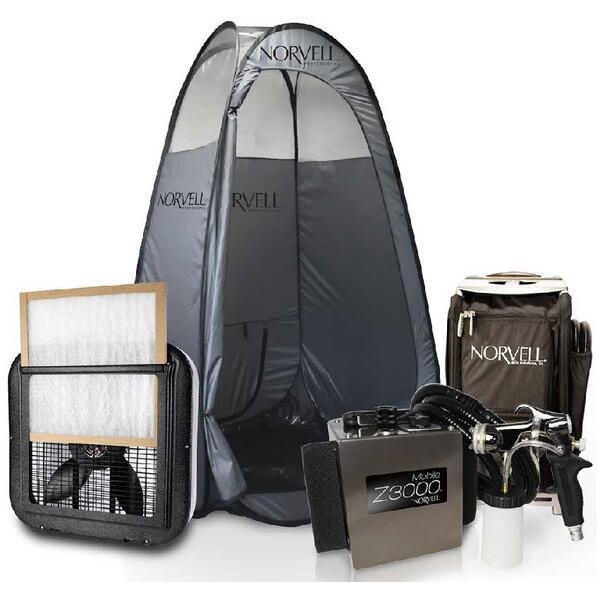
You can also create a darker bronze color by using self-tanning lotions. These will gradually darken your skin and you can use them along with a tanning bed for an even darker color! Many of these lotions offer additional skin benefits, such as skin tightening, moisturization, and pleasant smells!
If you want a temporary fake tan, you could consider some lighter sunless tanner options. Self-tanning mousse or mist gives you an instant glow that will wash off with some soap and water in the shower.
Depending on the make of the model, a home tanning bed costs between $1,800 to $3,000.
If you haven’t used a tanning bed before, it is recommended that you start with one to two sessions a week. This will help your skin adjust to the UV lights and build up a solid base tan.
This depends on your skin type, as well as the pressure and light level of the tanning bed. If you have fair skin which burns easily, you should only tan for about 5 minutes. The most amount of time anyone should be in a tanning bed at a time would be 15 to 20 minutes.
No, you should actually avoid showering right after getting out of a tanning bed – especially if you use bronzing lotions. These are designed to develop your tan naturally by increasing melanin production. You should wait at least a few hours before jumping in a shower.
This depends on a lot of factors – but mostly genetics. Some people naturally tan quite easily and will see results after their first session! Other people may need to tan several times a week for a month before they notice any changes.
If you are using your tanning bed frequently and do not see any tan developing, you should have a professional take a look. There could be an issue with your bulbs.
Although a tanning bed is quite large, it doesn’t use that much electricity. Since you should only use your home tanning bed for short periods of time, it ends up costing about the same as running a hairdryer!
Whether you’re a tanning junkie or you just want to maintain a nice glow, buying a home tanning bed could be a great option. You can build up a healthy bronze in just a few minutes a week all in the comfort of your own home!
The most important thing to keep in mind here is to buy a tanning bed from a trusted retailer. They are quite a big investment – and you want to be sure that you’re covered if anything goes wrong. You also want to talk to experts who know lots of information about the machines to help you find the best one.
That’s why so many home tanning booth owners have purchased their model from Family Leisure. We carry a wide variety of both residential and commercial tanning beds, along with accessories and other sunless tanning solutions.
You can reach out to our team anytime to learn about our models and place an order today! Simply give us a call at 877-775-3478.